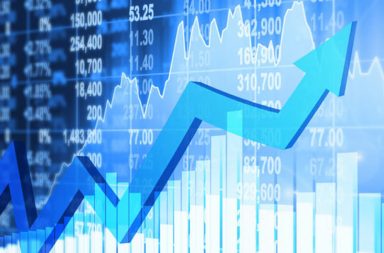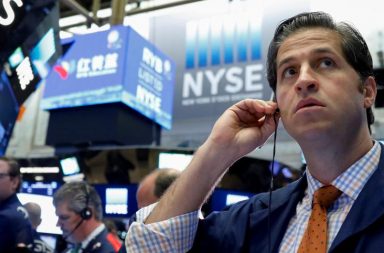On Tuesday, Dow futures were on track for a third straight day of losses, extending a correction to the market’s rally that on Monday endured the largest intraday drop in history for the Dow Jones Industrial Average.
At 7:16 a.m. EST: Dow e-minis were down 267 points, or 1.12 percent, with 184,051 contracts changing hands. S&P 500 e-minis were down 16 points, or 0.61 percent, with 1,054,865 contracts traded. Nasdaq 100 e-minis were down 32.5 points, or 0.51 percent, on volume of 189,356 contracts.
Both the S&P 500 and the Dow Industrials shed over 4 percent on Monday, the largest falls for both since August 2011. The Dow made history with its biggest intraday decline of nearly 1,600-points.
The CBOE Volatility index soared to 50.30 on Tuesday, its highest level since August 2015.
Wall Street’s nose-dive sent shocks across financial markets across the globe. Europe’s main bourses declined about 2 percent while Japan’s Nikkei lost 4.7 percent reaching four-month lows.
“It is hard to say (if the selloff will deepen today). A lot of people were surprised by yesterday’s action. The sharp drop in the afternoon seemed to be mainly programmed trading,” said Scott Brown, chief economist. “These kinds of corrections are a normal process. Where the bottom is I don’t know but the fundamentals haven’t changed.”

THE MORNING REPORT
Start your workday the right way with the news that matters most.
Your information is 100% secure with us and will never be shared Disclaimer & Privacy Policy
For the past nine years, the stock market has been on a bull run. Driven by a growing economy, robust corporate earnings as well as very loose monetary policy by central banks. Also, since President Donald Trump’s election shares have gained on the potential of tax cuts, corporate deregulation and infrastructure spending.
Benchmark 10-year note yields soared to 2.885 percent on Monday, the highest since 2014 before falling back to 2.707 percent. Bonds have been churned on concerns that the Federal Reserve will increase rates faster than expected as inflation picks up. Currently, the central bank has hinted it anticipates raising rates three times this year.
Investors will analyze comments from St. Louis Fed President James Bullard, who is scheduled to present regarding the U.S. economy and monetary policy.
 D. Marie
D. Marie 



